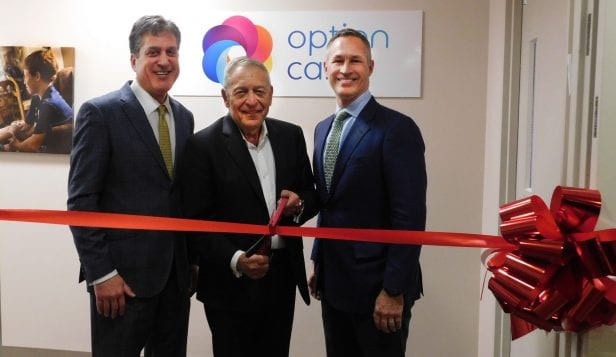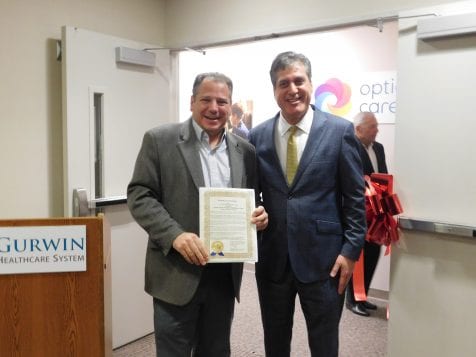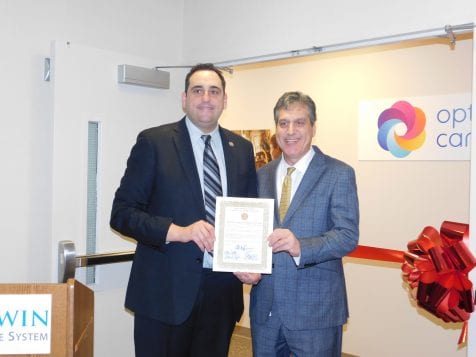Walt Whitman Birthplace, 246 Old Walt Whitman Road, Huntington Station presents an afternoon of Irish dancing on March 1 at 1 p.m. Children of all ages will enjoy an interactive performance by the Mulvihill-Lynch Studio dancers who will answer questions and teach some Irish dance steps. Followed by a guided tour of the museum. $9 per child, chaperones free. Visit www.waltwhitman.org or call 631-427-5240.
Legislature Could Move Forward on ‘Ban the Box’
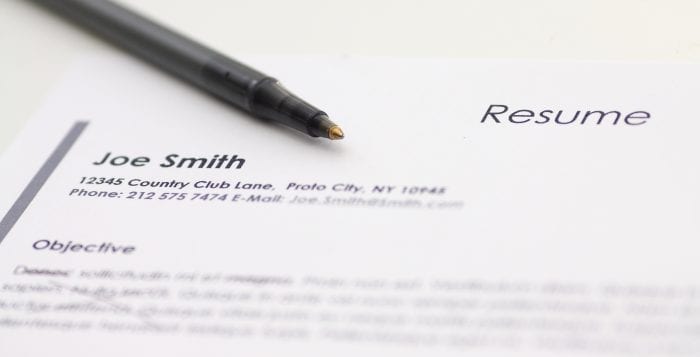
A piece of legislation that would restrict employers from asking about criminal histories in job applications could be voted on by Suffolk lawmakers in the near future.
At a county Legislature meeting earlier this month, legislators said that they had reached a bipartisan agreement on “Ban the Box” legislation and plan to present the bill at a later date.
County Legislator Samuel Gonzalez (D-Brentwood) along with Legislators Susan Berland (D-Dix Hills) and Kevin McCaffrey (R-Lindenhurst) plan on making amendments on the bill.
“People makes mistakes in their lives, I’m sure each of you have made mistakes.”
— Melissa Bennett
More than 20 people came out in support of the bill at a Feb. 11 meeting. Those who spoke agreed that it would allow former convicts the ability to become better contributing members of a community while helping them rehabilitate and reacclimate into society.
“I would like applaud the Legislature for making progress in supporting fair hiring practices in Suffolk County — it’s about time,” said Serena Liguori, executive director of New Hour, a Long Island nonprofit organization advocacy group that supports women, mothers and children impacted by incarceration. “We have worked with more than a thousand women across the county who have convictions. Most of them need employment when they come home.”
The executive director of the nonprofit said she hopes a potential passage of the legislation could lead to making strides around other issues.
Besides employment, “many of the women we help talk about housing and the lack of it, [and] transportation,” Liguori said.
Melissa Bennett, Huntington resident, said she believed individuals deserved a second chance.
“People makes mistakes in their lives, I’m sure each of you have made mistakes,” she said. “We’re human, it happens. Without banning the box, you are essentially [putting people] in a box.”
Elizabeth Justesen, community outreach director of the Legal Aid Society of Suffolk County, also stressed the need to eliminate the application question.
“Last year this bill lost by one vote,” she said. “For those who came out here every month [to the Legislature] it was a blow. We sat in disbelief in the Legislature’s inability to vote on human dignity.”
The community outreach director pointed out that one in three people have a criminal record in the U.S. Other advocates of such legislation, such as New York Gov. Andrew Cuomo (D) have also made the claim in the past, though according to PolitiFact, a fact-checking website, the FBI considers anyone who has been arrested on a felony to have a criminal record, even without a conviction. Effectively, one in three adults in the U.S. have a criminal record, but less have actually been convicted.
Though Justesen said with Suffolk County’s numbers of people on parole, people with convictions have it harder than it needs to be.
“In Suffolk County … with the largest parole population in the state, how can we expect them to get up on their feet and reintegrate to our communities if they cannot work,” Justesen said. “The time has come to do what is right and give people the chance to interview.”
Supporters have contended the ban would give applicants a chance to explain their crimes, in turn increasing their chance of getting hired, reducing crime and the number of repeat offenders being sent back to jail. More than 150 municipalities and 33 states in the U.S. have implemented “Ban the Box” laws.
Gonzalez spoke on the future of the legislation.
“We have been fighting the fight on this bill for a very long time, and we have been continuing to come together to iron out our differences,” he said. “We all felt that we needed to get this thing put in. … I think we are headed in the right direction on this issue.”
Local business owners are concerned about what the legislation could mean for them. The Suffolk County Alliance of Chambers encouraged members to voice their opinions on the issue.
“It is imperative that you know what your elected officials are voting on and have a chance to share your concerns before additional regulations are forced on you which ultimately might make it harder to operate a business here in Suffolk County and New York state,” the organization said in an email.
Last year, county legislators voted 9-8 against the measure. Lawmakers were concerned about putting too much onus on the employers. The previous version of the bill required employers to wait until after an initial interview to inquire about an applicant’s arrest or conviction record, and disclose to applicants the reason why they were not hired.
At the time, Berland did not support some of the requirements. The legislator said she didn’t think people who have a criminal record should get more benefits than others, noting that people with no criminal records do not learn why they were passed over for a job.
Northport Tigers Maul Ward Melville Patriots














Northport showed why they’re the No. 1 seed in the girls Class AA semifinal against the No. 4 seed Patriots of Ward Melville, surging ahead by 13 at the half Feb. 22, then stretching that lead to 20 points after three quarters to win it, 69-53, at Centereach High School.
Northport sophomore Sophia Yearwood topped the scoring chart for the Tigers with two triples, four from the floor and a free throw for 15 points. Sophomore Sophia Bica netted 14, and seniors Danielle Pavinelli and Kelly McLaughlin banked 13 and 12, respectively, for the Tigers.
Ward Melville senior Jamie Agostino scored 14 points, as did freshman Julia Greek, and senior Sarah Bucher netted 11 for the Patriots.
Ward Melville finished their season with an impressive 12-3 league record, 17-5 overall.
The win lifts the Tigers to the Suffolk Class AA title game against No. 2 Longwood at St. Joseph’s College Feb. 29.
Tickets are $10.00 cash at the door. Game time is 7:30 p.m.
Northport Tigers Tame Commack Cougars in AA Semi

















Northport led by two in the closing seconds of the game Feb. 25 when Commack intentionally fouled Sean Walsh with six seconds left. Senior Walsh went to the line and swished both to seal the deal for the 49-45 victory in the Class AA semifinal at Longwood High School.
Walsh topped the scoring chart for the Tigers with five triples, two from the floor and his final appearance at the charity stripe for 21 points. Teammate Pat Healy finished with 10 points, and senior Larry Citrola chipped in nine.
Commack senior Spencer Malloy led his team with 17 points, and senior Nick Greco netted 15 to conclude the Cougars’ season at 11-2, 16-5 overall.
The win lifts No. 2 Northport to 13-0 in league, 20-1 overall, and advance to the county finals where they’ll face top seeded Brentwood at Farmingdale State College Feb. 28. Tickets are $10 cash at the door. Game time is 8:30 p.m.
CDC Officials Expect Coronavirus to Spread to the U.S.
The spread of the new coronavirus has become increasingly likely in the United States, public health officials suggested, as the sickness that started in China has infected people in 39 countries including Italy and South Korea where an American service member has contracted the virus.
During a conference call with reporters on Tuesday, Nancy Messonnier, the director of the Centers for Disease Control and Prevention’s National Center for Immunization and Respiratory Diseases, said it was “not a question of if this will happen but when this will happen and how many people in this country will have severe illnesses.”
Messonnier’s warning included a suggestion that people start asking their schools about plans for dismissal and for conducting classes online if the coronavirus, now called Covid-19, affects their communities.
Stocks fell sharply lower on Monday and Tuesday amid concerns about the effect on the global economy.
As of earlier this week, over 80,000 people had tested positive for Covid-19, which claimed the lives of over 2,700 people. In the United States, the number of confirmed cases, including those from the Diamond Princess cruise ship, had reached 57. None of those cases is in New York, where 26 tests have come back negative and one is still pending, according to the New York State Department of Health.
Bettina Fries, the chief of the Division of Infectious Diseases in the Department of Medicine at the Renaissance School of Medicine at Stony Brook University, said the infections in Italy and South Korea signaled a new phase in the epidemic.
“We are now having these new cases where we can’t even link them” to exposure to people who have traveled to China, Fries said. “The genie is out of the bottle. Once that happens, it’ll be that much harder” to contain the virus.
Fries described the virus, which health officials believe is transmitted through droplets from people carrying the infection, as “behaving much more like the flu,” which is why the CDC is preparing for cases in the United States.
With other coronaviruses, including severe acute respiratory syndrome and Middle East respiratory syndrome, the majority of patients who transmitted these diseases had symptoms like high fevers. That may not be the case with Covid-19, as patients that are “asymptomatic could be shedding the virus,” making it more difficult to contain, Fries said.
Medical professionals don’t have any medication or vaccine, while the world population, which hasn’t been exposed to this new virus, also hasn’t developed any kind of resistance.
If pockets of the outbreak appear in the United States, it is “conceivable that schools could shut down and that there could be rules where people self quarantine” for the required 14 days, Fries said.
Fries added that it’s important to protect health care providers who are on the front lines in this battle. Stony Brook is continuing to make contingency plans in the event of confirmed cases of this coronavirus, which includes making space available if necessary. In the event of an outbreak, the hospital would change its policy of having trainees, residents and medical students go in and out of rooms with doctors on rounds, she said.
Fries added that the warmer weather may not cause a reduction in the incidence of the virus. “Every virus is different,” Fries said.
Gurwin Jewish opens state-of-the-art infusion center
COMMACK: A ribbon cutting celebration was recently held at the Gurwin Jewish Nursing & Rehabilitation Center marking the grand opening of the new Option Care Infusion Therapy Suite. Option Care Enterprises, Inc., the nation’s leading provider of home and alternate site infusion therapy services, has partnered with Gurwin to provide infusion therapy in a dedicated suite within the Center’s Weinberg Pavilion.
The grand opening celebration was well attended by local legislators, Long Island hospitals representatives and other local health care providers, as well as Gurwin and Option Care staff members. “We are pleased to enter into this partnership with Option Care Enterprises,” said Stuart B. Almer, President and CEO of the Gurwin Healthcare System, of which the Gurwin Jewish Nursing & Rehabilitation Center is a part. “The addition of the new Infusion Suite to Gurwin’s campus enables us to fulfill our mission of providing the best care to our residents while also meeting the needs of those living in the local community who require infusion medicines for complex and chronic conditions.”
Located adjacent to the Center’s dialysis center, the Infusion Suite specializes in IV-based therapies for anti-infectives, clinical nutrition support, immunoglobulin therapy and conditions such as chronic inflammatory disorders and bleeding disorders. The Infusion Suite will provide residents at Gurwin and in the surrounding communities convenient access to care and exceptional clinical support that includes:
- A full-service infusion pharmacy that compounds and dispenses medications
- Clinical management of patients
- Monitoring and 24/7 phone support by clinicians
- Four private infusion stations administered by highly skilled infusion therapy nurses
- Comfortable, specialized recliners and flat panel TVs for patient relaxation
Other amenities include assistance with patient registration, free on-site parking and easy access to facilities. For more information, visit the Option Care website at www.optioncare.com.
State’s Plastic Bag Ban to Take Effect Next Week
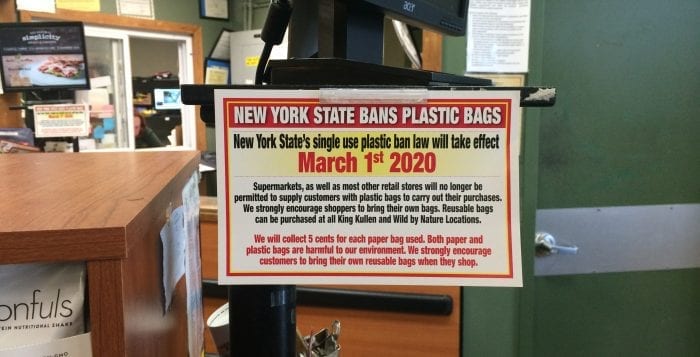
Beginning March 1, Long Islander shoppers will have one less option when packing their groceries, as a New York State ban on single-use plastic bags goes into effect.
The ban would prohibit retailers from giving out plastic carryout bags to customers. State lawmakers hope that this will lead to more residents deciding to bring their own reusable bags and a decrease of plastic waste.
The legislation is a step toward reducing the 23 billion plastic bags used by New Yorkers every year, reducing litter and helping the fight against climate change.
According to a Siena College Research Institute poll conducted after the bill was passed, 62 percent of New Yorkers support the ban compared to 33 percent who don’t.
“We are expecting a successful implementation.”
-Adrienne Esposito
While plastic bags will no longer be handed out at retailers, paper bags will still be available. In Suffolk County, consumers will be charged 5 cents for each paper carryout bag provided at a checkout. In areas that have the opted into the 5 cent charge, the fee does not apply for SNAP and WIC food benefit recipients.
Adrienne Esposito, executive director of the Citizens Campaign for the Environment, said the ban will have a positive impact in curbing plastic pollution.
“This is a significant accomplishment — Suffolk County needs to be commended for implementing the 5 cent bag fee,” she said. “The state noticed the success of it and it led to this ban.”
Some environmentalists are concerned about some final tweaks in the legislation by the DEC that would allow usage of bags which are thicker and heavier. Esposito said they aren’t concerned about it as it won’t be widely distributed as regular bags and will only be used for packaging of certain foods.
“If for some reason it needs to be tweaked further, we will be a part of those discussions,” she said.
State lawmakers are hoping the ban will increase usage in reusable bags. Earlier this month, Gov. Andrew Cuomo (D) announced a campaign, dubbed BYOBagNY, which has been spearheaded by the state Department of Environmental Conservation.
The agency has been running ads on the ban on TV, radio and social media. In addition, the DEC provided educational materials to its nine regional offices to use for outreach events and will be distributing more than 270,000 reusable bags to low- and moderate-income communities.
Stop & Shop branches throughout the county began offering free reusable bags to customers who bring in one or more carryout plastic bags for recycling.
Similarly, in the county, a plastic straw ban took effect this January, which required businesses to switch biodegradable alternatives. A Styrofoam ban was also implemented, prohibiting businesses from using items such as cups, trays and containers that are made from polystyrene.
“We are expecting a successful implementation — we as a society can learn to bring a reusable bag when we go out shopping,” Esposito said. “Most people have already made the change, some have lagged behind, but this is one thing they can do to reduce plastic waste.”
Suffolk Nonprofits Attempt to Galvanize LI Populace for Census

It’s a once-in-a-decade request, and this year’s census could determine just how much local schools, governments and nonprofits get in aid from the federal government. Not to mention, this year’s count could determine if New York could be sending one or two less U.S. representatives to Washington out of its current total of 27.
It has enough officials worried that New York State is funneling money around to different counties to get people to fill in the survey. Suffolk County is expected to receive $1.019 million toward its efforts. Officials have called for additional funds toward the census in this year’s budget, though most don’t expect the money to materialize before the census starts rolling in mid-March. New York State has made $20 million available of a total of $60 million to go toward engagement efforts in local municipalities. $15 million is going to the state’s 62 counties.
“It’s the principle that we count, and we should be counted.”
— Martha Maffei
This year, galvanizing the populace to take the census has become a phenomenon, with players at the state, county and local level putting a heavy emphasis on this year’s survey. On the line, advocates say, is a correct political representation on a federal level as well as $675 billion annually in federal funds for prioritizing road work, school aid, grants and Medicaid funding.
Due to the 2010 census, New York lost two congressional seats, and some have said this year’s count could lose the state one or two more. Local groups, both small and large, have the task of energizing enough people to gain an accurate headcount.
Like herding cats, that’s much easier said than done
Suffolk County Complete Count Committee was created in 2019 in part by the nonprofits Health & Welfare Council of Long Island and Long Island Community Foundation to generate engagement for those efforts.
Rebecca Sanin, president of HWCLI, said they have around 300 groups, including nonprofits, religious organizations, business organizations and governments, participating at least to some degree in outreach among 11 subcommittees. The nonprofit has also established guidebooks and graphics for everyone from immigrant leaders to hospitals to senior citizens.
“We’re really trying to build momentum, where the end is a 10-year funding impact to our region,” Sanin said.
The committee has become a hub for joining up the disparate groups looking to promote the census. The state has its own CCC, and other counties have been encouraged to create their own committees. County Executive Steve Bellone (D) was named to the New York State Complete Count Committee by Gov. Andrew Cuomo (D).
“Suffolk County is not only the largest suburban county in the state of New York, but we have the fourth largest and hardest-to-count populations in New York state,” Bellone said during a 2019 meeting with the Suffolk Complete Count Committee. Approximately 40 percent of county residents live in hard-to-count areas, he said.

County officials have hosted census job fairs this year and last, with positions paying $17 to $23 an hour.
Governments at both county and town level have started putting notices of the census in official emails and releases. Brookhaven Councilwoman Valerie Cartright (D-Port Jefferson Station) had been drafted to partner with the complete count committee. She said the town is working on a project with the tax receiver’s office to send out a reminder in the midyear tax receipts that goes out to every household in Brookhaven. They have also started to include information about the census in town programs hosted this year and had representatives from the census table at town events.
“Undercounting of communities can have a domino or ripple effect on community projects and issues for years to come,” the councilwoman said in an email. “A complete and accurate count of your community can result in improved infrastructure and schools, better community health and programs and much more.”
Steven Collins, who works for the U.S. Department of Commerce as a partnership specialist for the census in Suffolk, said the big game changer this year is the now-four different ways residents are going to be able to respond to the census. People can now respond over the internet, over the phone or using the usual mailed in paper survey. The fourth way is when all other options are exhausted, and when census operators have tried to reach an individual by several other means, an enumerator will knock on one’s door.
Though not all see the incentivized online component as a good thing. Sanin said there are many who have a general distrust of putting information online, due to the many examples of private companies being hacked to get access to a user’s personal data. There is also a large digital divide, and many still do not have easy access or understanding how to use the online component.
Despite the online component, census promotion still requires boots on
the ground
Stony Brook University has been active in trying to get students signed up for the count but have also started concerted efforts to encourage indigenous groups, especially those living on Long Island’s South Fork, to sign on for the census.
Despite how seriously census takers have been in requesting surveys, that still has not stopped multiple areas coming back with low response rates, some barely above 50 percent.
In Suffolk County presentations to the complete count committee, some communities are shown as much harder to count than others. While much of the North Shore shows a response rate of 70 percent or better, a large area in Huntington and Huntington Station, with sizable minority populations, have a response rate of 60 percent, at worst.
At www.censushardtocountmaps2020.usa, researchers have used previous census data to track which areas showed lower census participation.
In Brookhaven, one area with low turnout happens to be around the hamlets of Ridge and Upton and in Selden and Centereach, especially in the area along Route 112 that has a previous response rate of only 60 to 65 percent.
There are portions of Long Island with much worse representation. There are certain parts of West Babylon with a response rate as low as 0 to 60 percent.
SEPA Mujer, a nonprofit immigrants rights advocacy group, has chapters in several of the areas that show low response rates, including Riverhead, Huntington Station and Patchogue. Martha Maffei, the executive director of the nonprofit, said they have formed coalitions at two of their three chapters specifically to energize the community for the census. Many of their organizers and members have advocated for local immigrants to take the census which comes with the task of convincing the immigrant community the information will not be used against them by immigration enforcement.
“It’s the principle that we count, and we should be counted,” Maffei said.
Usually, she said, organizers take the tack of arguing that filling out the census will mean more funding for their school districts and how it will offer them better political representation.
The complete count committee has organized 13 total groups on the immigration subcommittee who have all pledged to move through these communities. The issue, she said, is money, compounded with the amount of ground these volunteers have to cover, with only the some $1 million to be spread amongst all of Suffolk.
“Fear nurtures an undercount, and an undercount nurtures our continued inequity.”
— Rebecca Sanin
Still, she’s optimistic these hard-to-count areas will be more active than 2010.
The census is meant to track everyone, including those undocumented immigrants, in order to get a full understanding of total population, but in 2019 the potential for a citizenship question to appear on the census created a tornado of partisan bickering, with opponents saying such a citizenship question would specifically target Latino groups and incentivize them to not respond to the census, thereby limiting the political capital such groups could wield. Officials said the pro-citizenship question was needed to enforce the Voting Rights Act of 1965, designed to help blacks overcome legal barriers to voting during the Jim Crow era.
In November of last year, The New York Times reported on disclosures from the White House hinting that Republican strategists had political reasons for encouraging a citizenship question, that it would increase Republican influence and political power once totals for the census were drawn by undercounting residents in largely Democratic areas.
Judges ruled the question illegal under Title 13, which states the government can only use data from the census for statistical purposes. Collins reiterated there will be no citizenship question on this year’s census, and all information is kept extremely confidential and secure.
Yet the idea still lingers in the minds of some residents, and it is something census advocates said they have had to work around.
Sanin and Maffei said the citizenship question has undoubtedly had a cooling effect toward the census, though to what extent is hard to gauge.
“We feel we are going from one attack to another,” Maffei said. “There is a lot of trauma in this community.”
The general distrust in government and in government systems is high, and trying to encourage people “living in the shadows,” as Sanin put it, is where much of the past year’s efforts have gone.
“Fear nurtures an undercount, and an undercount nurtures our continued inequity,” she said.
Hampton Inn to Be Built on Grounds of Old Huntington Town Hall

Developers will look to turn the old Huntington Town Hall into a Hampton Inn hotel. The $24 million proposed project by Holtsville-based Huntington Village Hotel Partners LLC would turn the more than 100-year-old former Town Hall, located at 227 Main St., into an 80-room hotel.
The Town Hall building would be converted to the hotel’s lobby, breakfast room and gym. A 53,636-square-foot addition will be used for the guest rooms.
Rosario Cassata and George Tsunis, developers for the project, also intend to buy the property adjacent and across the street of the old government building for parking.
In addition, the project secured $2.8 million in tax breaks from the Suffolk Industrial Development Agency.
The tax breaks were awarded at a Feb. 13 Suffolk IDA meeting and include $1.8 million off property tax over a 15-year period. According to IDA documents, about 128 workers will be employed during the construction phase of the hotel. Once completed, the hotel will have 14 employees who will earn just over $39,700 per year.
Tony Catapano, executive director of the Suffolk County IDA, said he believes the hotel will bring in visitors from outside and around Long Island.
“The historic nature [of the building] will draw people to it, there will definitely be interest from residents in Suffolk and Nassau County,” he said.
The proximity of the hotel to the downtown area is another plus, the executive director of the agency said.
“The hotel from downtown Huntington village is really walkable, and they’ll be able to take advantage of the local amenities,” he said. “The old Town Hall building is the eastern entrance to downtown and I think retrofitting it into a hotel will make [the entrance] beautiful.”
The IDA granted the tax incentives using a tourism exception to the state law that prohibits helping retailers. As part of the IDA’s Long Island First policy, the developers are required to buy materials from local companies and employ local construction workers.
This is not the first time a hotel has been proposed for the old Town Hall, back in 2014, the IDA backed a different project that would have cost upward of $10 million. It would have received $3 million in tax breaks over 15 years. The project ultimately failed to get off the ground.
According to IDA documents, the hotel is anticipated to open in the second quarter of 2021.
Your Turn Series on Brexit: Prime Minister Boris Johnson Gets It Done
A Brit Reviews the UK’s Eventual Withdrawal from Europe
Part 3 of 3
By John Broven
When I started this series in March 2019, I wanted to give U.S. readers a Brit’s inside view on Brexit. The term has now become such common currency over here, rather like the Latin phrase “quid pro quo,” that all I need explain is that Brexit refers to Britain exiting the European Union, which it duly did Jan. 31 of this year. On the same date the U.S. Senate rejected further witnesses in the impeachment trial of President Donald Trump (R). It was hardly a red-letter day for western politics.

After publication of the first two articles, I was approached by residents of all age groups at the Stony Brook railroad station, in a deli, at a mall, in a coffee shop, at a party, even at an outdoor art show. Everyone expressed an intrigued interest in Brexit and, it’s fair to say, concern for my English home country. What on earth was going on? Why indulge in such potential self-harm?
When I left you with my June article, the United Kingdom and EU had agreed on another revised exit date, Oct. 31, but with no parliamentary majority the way forward was still far from clear. “Will there be a general election, second referendum, another EU extension or a hard no deal?” I asked.
It came to pass there was a general election Dec. 12 and a further EU extension to Jan. 31, with no second referendum or precipitous hard deal (to date). With the U.K.’s withdrawal from the EU, what happened in the interim?
A third prime minister in three years
For a start, on July 24, Boris Johnson achieved the prize he had wanted from his days as a privileged aristocratic youth at Eton College and Oxford University: the prime ministership of the U.K. After being elected as leader of the Conservative Party (also known as the Tories), he took over from the hapless Theresa May (C) who was unable to deliver on her promise to leave the EU after three years in the hot seat.
Brexit had thus claimed another victim, making Johnson the third prime minster since David Cameron (C) fell on his sword after a dismal and inept Vote Remain campaign during the June 2016 referendum.
Without a working majority, Johnson was confronted by a parliament determined to ensure that if Brexit happened there would be no hard deal. The new prime minister even tried, unsuccessfully, to suspend parliament for five weeks in an effort to stifle debate and ram through the withdrawal agreement by Oct. 31. Queen Elizabeth II was inadvertently embroiled when she dutifully signed the prorogation request of Johnson, who made the flimsy pretense of needing time to prepare for the Queen’s Speech, but the U.K. Supreme Court ruled otherwise. I suspect Her Majesty was not amused.
There was clearly a power battle being fought between parliament and the prime minister, reminiscent of the current war of attrition between Congress and Trump.
The generally pro-Brexit Tory Party, with its band of rabid hardliners, was armed with the 52-48 percent Voter Leave victory of the 2016 referendum. Amid calls from the Brexiters for “democracy” to be respected and with a definite all-round war weariness in the nation, it was clearly going to be difficult for the main opposition parties — Labour, Liberal Democrats, Scottish National Party and the Greens — to overturn “the will of the people.”
At one time, the charismatic speaker of the House of Commons, John Burcow, even invoked an arcane 1604 parliamentary principle to stifle a government motion. (Think about it, that’s 16 years before the Mayflower landed on our shores.) However, the opposition could not find agreement among themselves for a unified approach, even with voting support from 21 Tory rebels. This rump included former Chancellor of Exchequer Philip Hammond, Father of the House Ken Clarke and Sir Winston Churchill’s grandson, Nicholas Soames. Incredibly these respected establishment figures were thrown out of the Tory Party in petulant retribution. You see what I mean about parliamentary drama.
With time running out, the EU begrudgingly extended the Oct. 31 deadline to Jan. 31 after a last-minute fudged agreement with Johnson over the vexatious Irish border backstop question.
December general election
Parliament was still in deadlock, but eventually a general election was called for Dec. 12. Campaigning on a resonating “Get Brexit done” ticket, Johnson won a huge working majority of 80 seats to break the parliamentary impasse. His Conservative Party brushed aside the Labour Party and Liberal Democrats, also Nigel Farage’s Brexit Party. Labour, in its worst general election result since 1935, ignominiously saw the demolition of its “red wall” in the industrial north of England, the traditional home of socialism. The Lib-Dems, under Jo Swinson, went all out with a remain message. Yet this bright young leader couldn’t articulate on the stump the benefits of staying in Europe and she even lost her own parliamentary seat.
The main opposition winners were the Scottish Nationalist Party, under Nicola Sturgeon, which swept Scotland. Watch out for a possible future referendum for Scotland to leave the U.K. and become a member of the EU.
Richard Tapp, of Burgess Hill, West Sussex, added in an email, “Besides the Scottish Nationalists, the pro-EU parties in Northern Ireland also did well, at the expense of the pro-Brexit Democratic Unionist Party whose leader in Westminster lost his seat to the nationalists of Sinn Fein who campaign for a united Ireland — and so remain in the EU.”
Johnson had targeted the disaffected, forgotten part of the nation — the provincial middle class as well as the working class — with a Trump-like populist message, just as the new prime minister had done beforehand with the referendum. The general election was a damning indictment of Jeremy Corbyn’s leadership of the Labour Party, both for his far-left policies and his “sit on the fence” approach to Brexit.
Interestingly, there are concerns in the U.S. about the Democratic Party following the Labour/Corbyn route to self-destruction in the next election with a progressive socialist agenda. James Carville, President Bill Clinton’s (D) 1992 election-winning strategist, was particularly animated on the subject in the Financial Times and on “Morning Joe,” referring to the unelectable Corbyn by name.
Brexit is done
And so, with no obstacles in his way, Johnson “got it done” by signing a withdrawal agreement with the EU, meaning Britain officially left the union at the end of January after almost a half-century of membership. Brexit is now fully owned and controlled by the prime minister and his Conservative Party, with the background help of Dominic Cummings, the architect of the Vote Leave campaign’s victory in 2016.
The coverage on BBC World News in Brussels revealed genuine European regret at the loss of Britain as a vital contributing member to the EU, including politicians from Poland and Sweden. Yet the expected party atmosphere in the U.K. didn’t materialize because the country was still split right down the middle — and it was raining on Farage’s celebration parade outside the Houses of Parliament. Financial Times columnist Simon Kuper had a perverse explanation for the low-keyed reaction: “On Jan. 31, many Brexiters spent their ultimate moment of triumph attacking elitist traitors instead of celebrating.” This revenge, he said, “is so much of the point of populism.”
Those Brexit voters expecting a brand-new dawn, with a return to the glory days of the British Empire free of the EU yoke, will have to wait until at least Dec. 31 this year for all kinds of trade, security and legal negotiations to be agreed before the cord is cut.
During this transition period the U.K. will continue in the EU’s custom union and single market, while still complying with EU rules (but without any more say in the lawmaking process in the European Parliament). Johnson has indicated there will be no extension, leading to the nightmare scenario of a possible no deal commencing Jan. 1, 2021. It will not be an easy negotiating ride.
I’m still of the view that a people’s referendum should never have been considered by Cameron on such a critical and complex matter, which will affect generations to come. His irresponsible bet was compounded by the Brexiters never explaining the downsides — and dangers — of leaving Europe, including diminished influence on the world stage. Already China is waiting in the wings.
Michael Hanna, of Hassocks, West Sussex, echoed my thoughts in an email on the night of Jan. 31: “In about two hours time Boris and his Gang will tear us out of the European Union on the say so of just 17.4 million, a mere 37 percent of the electorate. This is politically the saddest day of my life. For the last 47 years we have been members of the great European family of nations to which we should naturally belong. This has given us huge benefits which the Tory government is knowingly throwing away.”
With thanks for their on-the-spot observations to my British friends Roger Armstrong, Chris Bentley, Mike Hanna, Martin Hawkins, John Ridley and Richard Tapp.
John Broven, a member of the TBR News Media editorial team, is an English-born resident of East Setauket, who immigrated to the United States in 1995. He has written three award-winning (American) music history books and is currently editing the first book on New York blues.














